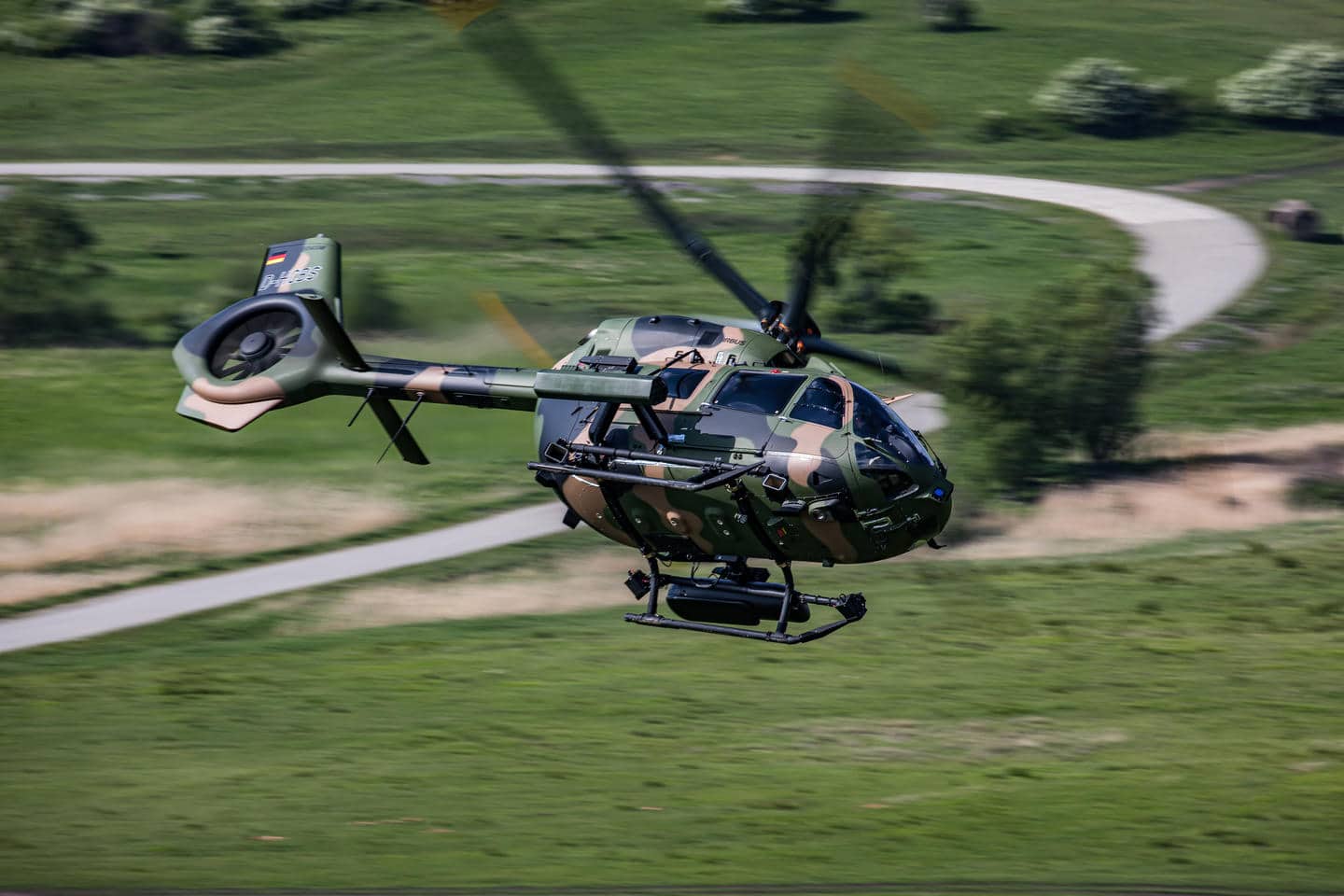Aerospace
Cyprus orders six H145Ms for its National Guard

Nicosia – The Cyprus government has signed a contract with Airbus Helicopters to purchase six H145M helicopters, with an option for another six. The Cypriot National Guard will operate the five-bladed helicopters.
“The operation of this agreement will provide the National Guard with a cost-effective and high-performance helicopter solutions to meet the General Staff’s operational requirements and addresses many of the future challenges of light attack helicopter fleets.” The H145M will improve the National Guard’s day and night capabilities in delivering rapid response, fire power and precision, providing effective combat support, and acquiring critical information, according to Andreas P. Louka, Permanent Secretary of the Republic of Cyprus Ministry of Defence.
A military light utility helicopter with multiple roles is the H145M. The newest H145M, which is a derivative of the civil H145, has an unique, five-bladed rotor that boosts the helicopter’s payload by 150 kg. The new bearing less main rotor’s design makes maintenance tasks easier as well.
It is powered by two powerful Safran Helicopter Engines Arriel 2E turbines, controlled by the FADEC (full authority digital engine control) system. In addition, the helicopter is equipped with the Helionix digital avionics suite and thus offers not only innovative flight data management but also a powerful 4-axis autopilot, which considerably reduces the pilots’ workload in their missions. Its particularly low noise emissions make the H145 the quietest helicopter in its class.
The H145M is already in service in Hungary (20), Germany (15), Serbia (9), Thailand (5) and Luxembourg (2). The US Army operates a fleet of more than 460 locally built civil helicopters of the H145 family under the name UH-72 Lakota.

Aerospace
Boeing Transfers Rocket Stage to NASA, Paving Way for Human Moon Mission

Boeing has achieved a significant milestone by providing NASA with the second core stage of the Space Launch System (SLS) rocket.
This crucial component, crafted at NASA’s Michoud Assembly Facility (MAF), is set to propel the Artemis II crew into lunar orbit, marking humanity’s return to deep space after a 50-year hiatus.
The monumental Boeing-built rocket stage, the largest element of the Artemis II mission, will embark on a journey aboard the Pegasus barge, traveling 900 miles to NASA’s Kennedy Space Center.
Comparison of two legendary aircraft B777x vs B747 aircraft:Click here
Upon arrival, it will be meticulously integrated with other essential Artemis II components, including the upper stage, solid rocket boosters, and NASA’s Orion spacecraft within the iconic Vehicle Assembly Building. This intricate integration process is a vital step toward the eagerly anticipated Artemis II launch, slated for 2025.
“Boeing-built products helped land humankind on the moon in 1969, and we’re proud to continue that legacy through the Artemis generation,” remarked Dave Dutcher, vice president and program manager for Boeing’s SLS program. “Together, with NASA and our industry partners and suppliers, we are building the world’s most capable rocket and paving the way to deep space through America’s rocket factory in New Orleans.”
NASA, Lockheed Martin Reveal X-59 Quiet Supersonic Aircraft:Click here
The delivery of Core Stage 2 marks a significant achievement in the evolution of the SLS rocket. Towering over 200 feet and powered by four RS-25 engines, this core stage, coupled with two solid-fueled booster rockets, will generate a staggering 8.8 million pounds of thrust. This immense power is crucial to launching Artemis II and future missions into the vast expanse of space.
The SLS rocket stands unparalleled in its capability to transport both crew and substantial cargo to the moon and beyond in a single launch. Its extraordinary capacity will facilitate the delivery of human-rated spacecraft, habitats, and scientific missions to destinations including the moon and Mars, ushering in a new era of space exploration.
-

 Travel1 week ago
Travel1 week agoAir India to Expand US Operations with Three New Routes After a Decade
-

 Travel2 weeks ago
Travel2 weeks agoWhy We Should Avoid These Stamps in a Passport
-

 Airlines1 month ago
Airlines1 month agoInvestigations Reveal Fake Chinese Titanium in Boeing and Airbus Jets
-

 Tech4 weeks ago
Tech4 weeks agoChina’s CATL Plans 1,800-Mile Electric Plane Launch by 2027
-

 Airport3 days ago
Airport3 days agoTop 10 Largest Airports in the World by Size
-

 Aerospace4 weeks ago
Aerospace4 weeks agoChina’s Fighter Jets Turn Wings into Autonomous Drones
-

 Airlines4 days ago
Airlines4 days agoAir India Rolls Out A350s for Delhi-New York JFK and Newark Routes
-

 Defence3 weeks ago
Defence3 weeks agoBoeing Enhances Chinook with New Engines and Block II Upgrades at $96 Million







